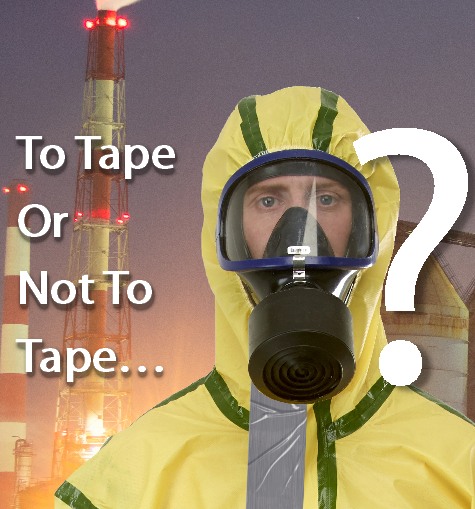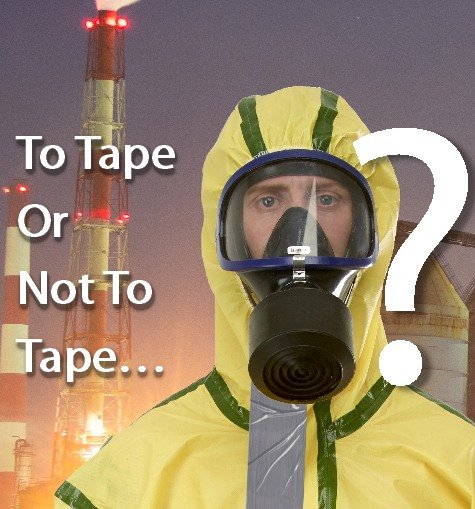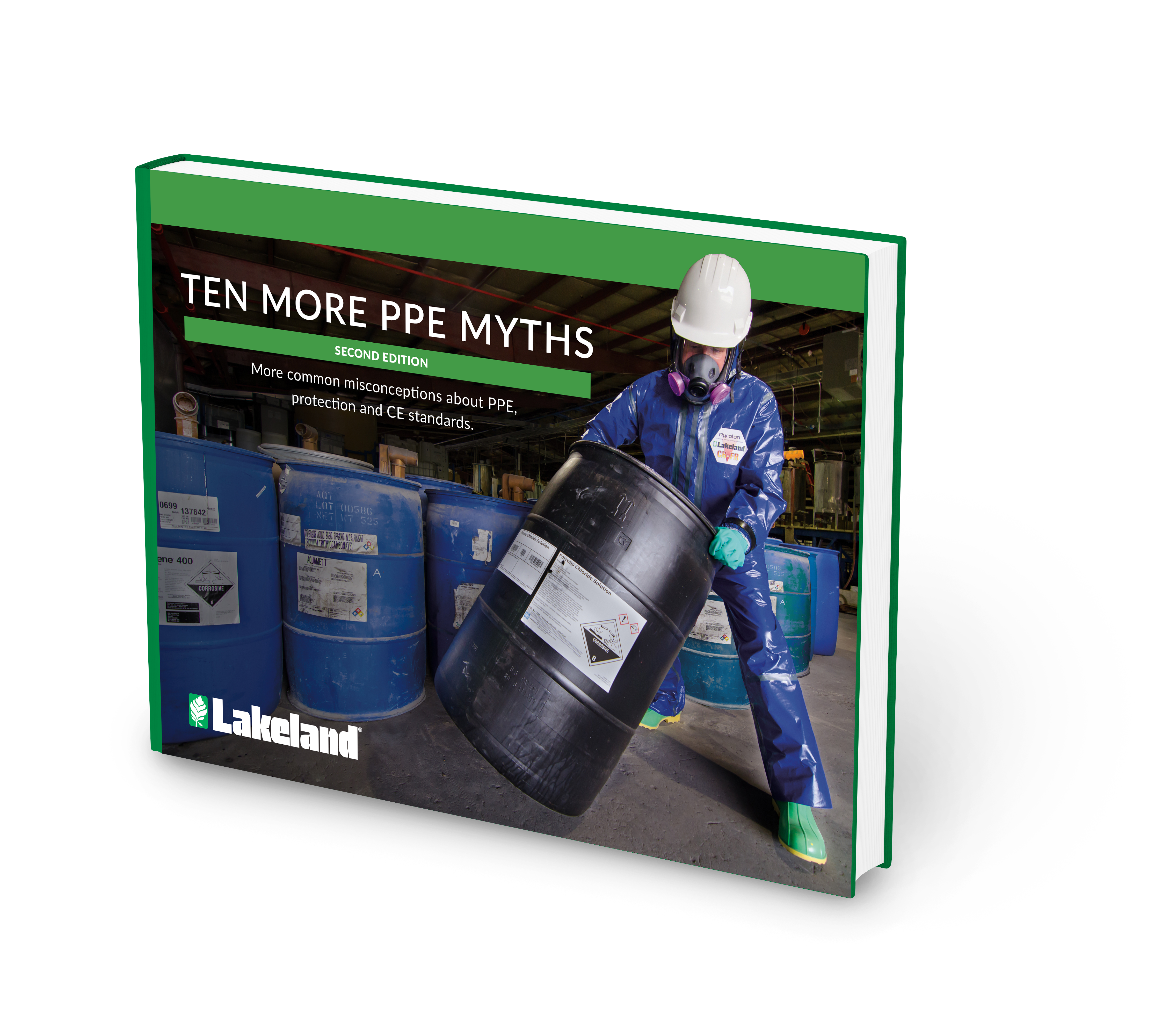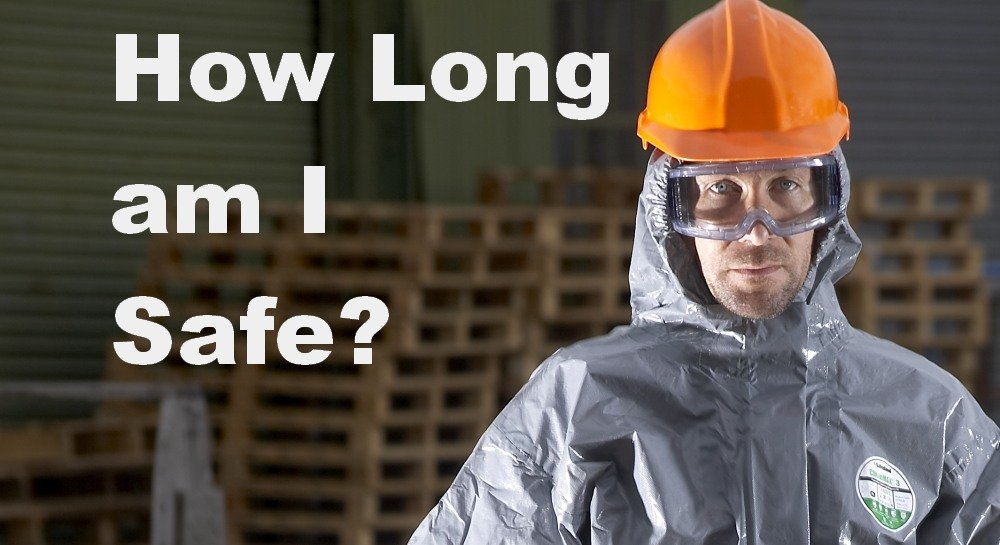With the proliferation of limited life garments – often at lower and lower prices, it is vital to ensure you are getting what you think you are getting – especially in the case of Type 3 where protection is critical. Yet the detail of some recently introduced garments suggest they may not quite provide what is written on the label… at least not in the way you would probably understand it… and you might be using one of these garments…
Type 3 requires a superior coverall design – especially in respect of the front fastening. At this level, protection is against a dangerous chemical, but more importantly against strong and directional pressure sprays of that chemical. As such the CE Type test is demanding and first time fails, resulting in the manufacturer having to make adjustments to the design in order to achieve a pass next time are not uncommon. This is a good thing. It ensures garments come up to a minimum standard.

To Tape or not To Tape? That is the Question
For finished garment Type testing (whether Type 3,4 5 or 6) it has long been the convention to use an adhesive tape to seal the joins between the coverall and other PPE used during the test; sleeves to gloves, ankles to boots and hood to face mask. Not doing this would be impractical as without it all garments would be likely to fail. And the use of taping where used is (or should be) clearly stated in the User Instructions.
However, in some more recently certified garments close examination of User Instructions reveal statements that indicate a step in testing beyond this. Namely, that additional taping has been used not only on connections with other PPE, but also to cover the zip flap. In other words tape has been applied to the full length of the zip flap in order to pass the Type 3 test.
This is different to applying tape to connections with other PPE. Those connections do not form an integral part of the PPE being tested and it is normal in any case, in the “real world” to apply such taping in critical applications. However, the front zip fastening of the garment IS an integral part of it and IS being assessed in the test. So adding tape to it is simply adding further protection to the garment itself and an admission that without it the garment will fail and therefor will NOT provide Type 3 protection.
I hesitate to use the phrase – but in this case it does seem remarkably appropriate – isn’t this just “sticking an Elastoplast over the problem without actually dealing with the problem…”?
Does this mean the garment is not a genuine Type 3 garment? No, because a notified body has issued a certificate stating that it is. But actually that is not the important question. The important question is, “does the garment provide the protection a user needs?” Users can and should determine this for themselves – but in full knowledge of the protection that it provides according to what tests it has been subjected to and in what circumstances… including whether the zip is taped or not taped…
The Real Issue

The real nonsense of this can be recognized if you consider that some garments currently certified only to Type 4 would probably pass a Type 3 test if tape was applied here and there to various parts of it. And we could go further… some Type 6 garments would probably pass Type 3 if additional tape was applied to the zip flap and over all the seams… in fact isn’t this what we do in manufacturing with Type 3 garments…? Yes it is… but we do it in the factory rather than doing it just before a Type Test in order to gain a pass…
To be clear, no-one is suggesting anything underhand or illegal here. These garments have been approved by Notified Bodies – no doubt on the basis that the taping is detailed in the User Instructions. However, our experience is that many users do not read the detail of User Instructions and may not be aware that the garment is only Type 3 if the zip flap is additionally taped. This could be a problem and in my opinion manufacturers should make a stronger point of it than simply inserting it in User Instructions. It is vital that users of chemical suits are made fully aware of the protection that is shown on the label.
Petrochemical workforces are facing a dilemma as they are made to comply with the European minimum standard requirements, but not all is as it seems.




